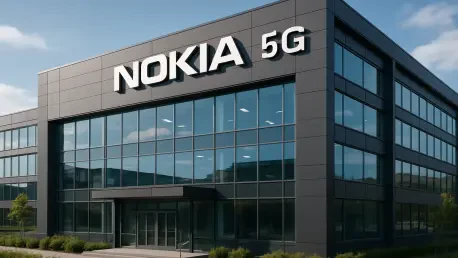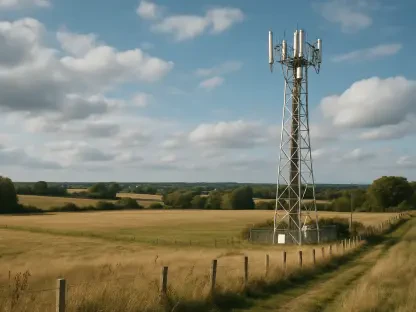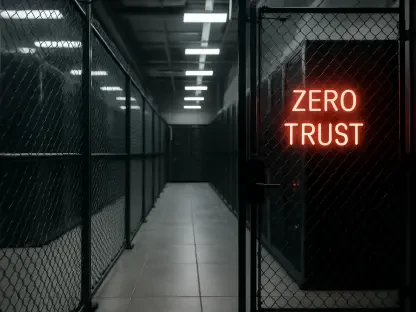In a world where modern warfare increasingly hinges on real-time data, secure communications, and cutting-edge technology, Nokia has emerged as a surprising yet formidable contender in the defense sector, marking a significant pivot for the telecommunications giant. The company has recently unveiled a suite of military-grade 5G solutions tailored to meet the complex demands of today’s battlefields. This strategic move leverages Nokia’s deep expertise in high-speed networks to address the unique challenges faced by military forces. As global defense budgets swell in response to rising geopolitical tensions, and conflicts evolve into data-driven and electronic warfare arenas, Nokia’s entry into this space could redefine how military operations are conducted. The focus on secure, interoperable systems aligns with the priorities of Western markets and NATO allies, positioning Nokia to capitalize on a niche yet rapidly growing market. This development not only showcases the adaptability of commercial tech in defense applications but also raises questions about the future of military communications.
Pioneering Defense Solutions with Cutting-Edge Tools
Nokia’s foray into the defense sector is marked by innovative products designed specifically for military use, reflecting a keen understanding of the operational and security challenges faced by armed forces. A flagship offering, the Mission-Safe smartphone, stands out with its construction using 90% non-Chinese components and manufacturing based in Europe. This deliberate choice addresses critical concerns over supply chain security, a growing priority for Western nations wary of data vulnerabilities in defense infrastructure. Giuseppe Targia, Nokia’s Senior Vice President for Space & Defense, has highlighted the device’s unique customization capabilities, such as compatibility with alternative operating systems, which allow military users to tailor the phone to stringent security and control requirements. This smartphone isn’t just a communication tool; it represents a broader shift toward trusted, geopolitically aligned technology solutions that resonate deeply with NATO countries seeking reliable partners in an era of heightened global tensions.
Beyond the smartphone, Nokia has bolstered its defense portfolio through strategic acquisitions and product development that cater to the tactical needs of modern warfare. The acquisition of Fenix in 2024 brought specialized expertise and access to classified projects in the United States, significantly enhancing Nokia’s credibility in this field. A standout result of this expansion is the Banshee 5G Tactical Radio, a lightweight “network in a backpack” weighing less than 10 kilograms. This portable system creates secure, tactical networks in the most challenging environments, enabling mobile command posts and dispersed units to maintain connectivity. Its 5G capabilities ensure high-bandwidth, low-latency communication, essential for integrating advanced technologies like drones and sensors on the battlefield. This radio system exemplifies how Nokia is adapting commercial innovations to meet the rigorous demands of military operations, providing a glimpse into the future of portable, powerful defense communication tools.
Transforming Warfare with 5G Technology
The integration of 5G technology into military applications lies at the heart of Nokia’s defense strategy, promising to revolutionize how multi-domain operations are conducted. Recognized by NATO under the STANAG 5665 standard, 5G is positioned as a secure and interoperable platform for multinational defense efforts. This technology supports a wide array of mission-critical applications, from IoT devices to autonomous platforms and augmented reality tools used by soldiers in the field. By enabling real-time data collection and transmission to remote command centers, Nokia’s 5G solutions facilitate AI-driven analysis that enhances situational awareness and sharpens decision-making processes. This capability is vital in today’s fast-paced combat scenarios, where split-second decisions can determine outcomes. The alignment with NATO standards not only validates the technology’s relevance but also underscores Nokia’s commitment to fostering collaboration among allied forces through cutting-edge communication systems.
Moreover, the evolving nature of conflict amplifies the need for such advanced communication infrastructure, as traditional systems fall short in meeting modern demands. Warfare today is increasingly dominated by electronic tactics and the necessity for instant data access, areas where Nokia’s 5G offerings provide a significant edge. Unlike older, voice-centric tactical radios, these solutions deliver the speed and capacity required for complex missions involving vast data streams from multiple sources. This technological leap aligns with global trends of rising defense investments, driven by ongoing geopolitical challenges and regional conflicts such as the war in Ukraine. Nations are prioritizing next-generation tools to maintain strategic advantages, and Nokia’s ability to adapt commercial 5G advancements for military use positions it as a key enabler in this transformation. The focus on high-performance networks highlights a broader shift toward data-driven warfare, where connectivity can be as critical as physical firepower.
Navigating Geopolitical and Market Opportunities
Nokia’s strategic emphasis on supply chain security and alignment with Western priorities offers a distinct advantage in the competitive defense market. By prioritizing non-Chinese components and European manufacturing, the company addresses growing apprehensions about foreign influence over critical infrastructure—a concern paramount among NATO countries. This approach not only builds trust with key stakeholders but also taps into a favorable market dynamic, as defense budgets in Europe climb to as much as 5% of GDP, with parallel increases globally. Nokia’s tailored solutions, designed with military-specific needs in mind, set it apart from competitors who may lack a similar focus on geopolitical alignment. Additionally, the exploration of opportunities in non-NATO Asian markets suggests a broader vision for global expansion, balancing regional priorities while maintaining a strong foothold in Western-dominated defense procurement landscapes.
The backdrop of escalating defense spending and shifting warfare paradigms further amplifies the relevance of Nokia’s offerings, as nations adapt to new strategic realities. The growing importance of electronic warfare, situational awareness, and control over telecommunications on the battlefield demands robust communication systems capable of handling sophisticated threats. Nokia’s military-grade 5G technology meets these needs by providing secure, high-capacity networks that support everything from drone coordination to real-time analytics. This alignment with current and emerging defense trends positions Nokia to benefit from sustained investments over the coming years, as governments worldwide re-arm and modernize their forces. The company’s proactive stance in addressing both technological and geopolitical challenges underscores its potential to become a leading player in this specialized sector, driving innovation that could reshape military communications for decades to come.
Reflecting on a Strategic Leap Forward
Looking back, Nokia’s bold entry into the defense sector with military-grade 5G technology marked a pivotal moment in the intersection of telecommunications and military innovation. The introduction of products like the Mission-Safe smartphone and Banshee 5G Tactical Radio demonstrated a keen grasp of the urgent needs for security and connectivity in modern conflict zones. Supported by strategic moves such as the acquisition of Fenix, Nokia effectively strengthened its expertise and market position. Moving forward, stakeholders can anticipate continued advancements as Nokia refines its offerings to address emerging threats and operational demands. Governments and defense organizations might consider deeper collaborations with tech firms like Nokia to accelerate the adoption of interoperable, secure systems. This trajectory suggests a future where commercial technology plays an even greater role in safeguarding national interests, urging a closer examination of how such integrations can enhance global security frameworks.









